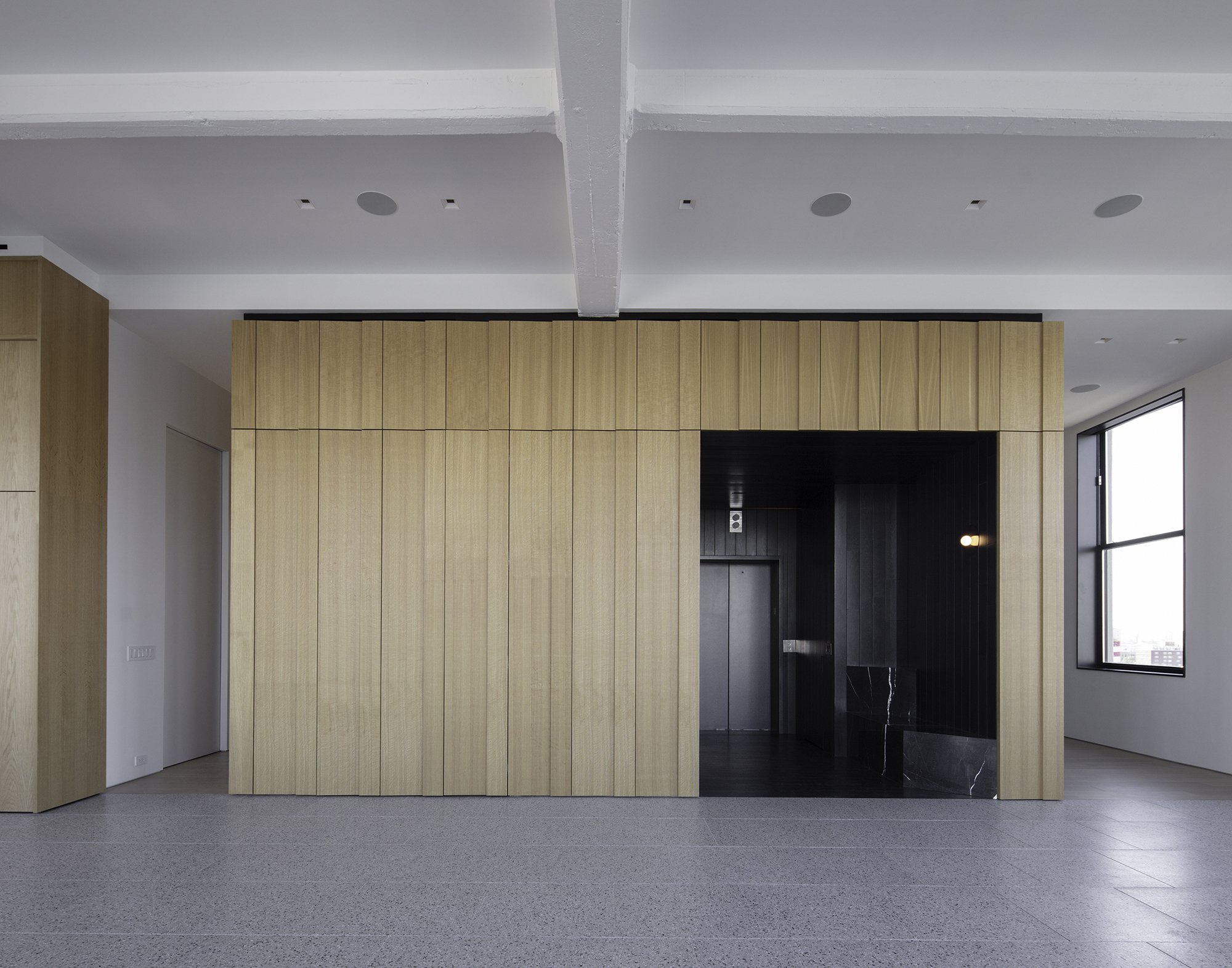Four Corners Loft
Brooklyn, New York
Completed - October 2018
Design Team
Max Worrell, Jejon Yeung
Collaborators
Lighting Designer: Lighting Workshop
Mechanical Engineer: Engineering Solutions
Contractor: Metropolitan Innovations
Situated in the landmarked Clocktower Building in the Dumbo neighborhood of Brooklyn, the design of the loft was inspired and informed by the space’s unique panoramic views of Manhattan and Brooklyn. Two interior volumes are the programmatic and organizational hubs of the loft, allowing for living space along the perimeter that takes advantage of the expansive four exposures of the New York City skyline beyond. The primary volume is clad in white oak panels that are shaped to create a vertical raked pattern, enclosing an entry foyer, a powder room, and a guest bath, along with other utility spaces, including a wet bar concealed by a custom door assembly. Spaces within this central volume feature dark materials and minimal, taut details, in contrast to the volume’s exterior, such as the black-stained white oak panels and marble interior utilized in the entry foyer. The second volume, long and horizontal, contains the kitchen finished in white materials and marble. While it is clad in paneling made from the same white oak species as the central volume, it is detailed with solid oak battens that create a different texture and rhythm.
The volumes also provide contrast to the open, view-soaked perimeter. The perimeter walls throughout the loft are white, intentionally stark against the dark window frames that help reduce glare, while framing the spectacular views. Oversized pocket doors conceal two private bedroom suites and provide more intimate spaces through the use of wood floors and stone.
While the two volumes contain material similarities, the subtle differentiation in the oak paneling, and the unique materials used for disparate programmatic elements, divide them according to distinct identities.
Stone in particular strikes a grounding counterpoint to the oak and sunlight, such as in the form of the concrete terrazzo floor and monolithic terrazzo kitchen island in front of the second volume. The concrete ceiling and structure of the historical warehouse are exposed and expressed throughout to highlight the rawness and texture of the building, juxtaposed against the warmer materials, and pure minimal lines of the new elements.
Photographs
Naho Kubota















